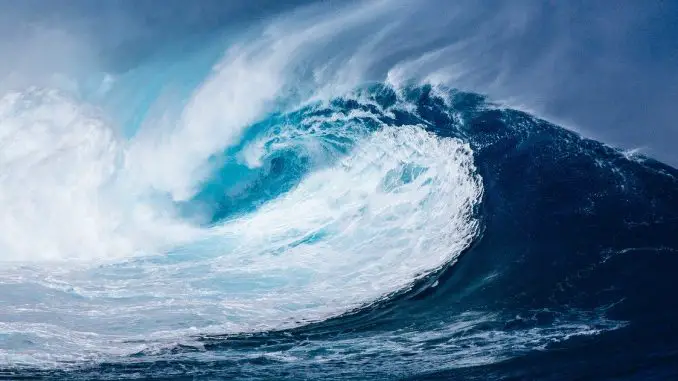
There is immense power in ocean waves – but it is not quite easy to tame. Ever since the 18th century man has tried to use wave power but has not yet succeeded on a full scale. The strength of power itself is one of several challenges.
Higher energy density than wind and sun
An advantage of wave power compared to solar and wind is that it has much higher energy density, five times higher than, for example, wind. Energy density is the amount of energy stored per volume or mass unit in a system or chemical substance.
Energy is highest – that is, it blows the most – autumn and winter when we need the most electricity. In theory, waves can absorb a great deal of energy – but that remains to be done in reality.
The attempts to tame the power of the waves are nothing new. The very first patent was granted in Paris in 1799. In 1910, the first turbine was produced which provided electricity to a private house in Royan in Bordeaux and in 1947 the first commercial wave power plant was put into operation in Japan.
During the oil crisis of the 1970s, the British Stephen Salter designed the efficient wave power plant, “Salter’s duck” – but it became just a prototype. The research grants were withdrawn when the oil became cheap again.
Solid and understandable technology
The technology is quite tangible and understandable for water builders: a movement to be counteracted and energy to be absorbed by slowing down a lot.
Different types of wave power plants
There are several different types of wave power plants. One is when a wave hits a buoy at the surface, the buoy absorbs some of the wave’s energy. The buoy should not follow the wave but “destroy” it.
The buoy starts to move and pulls a rope that sits in a foundation on the bottom. The rope, in turn, pulls in a transformer with magnets, which are drawn up and down in a stator and electrical voltage arises.
Big challenges with wave power
The biggest challenge is getting components to hold, these are such enormous forces in the sea. You design on the basis of the most common wave, but at the same time, storms occur where the waves are extremely much larger. Over-dimensioning makes it too expensive.
All operations in the sea are complicated and costly. It is expensive to hire a diving team, or more expensive to rent a large boat. It’s hard to get things working in the sea. Measuring equipment sits on a small cobble that becomes completely flooded when it storms – then you can’t go ashore there, the waters are notorious among boaters for their currents.
Promising market
Another challenge is that the theory of wave power is so complicated that hardly even supercomputers are sufficient for the calculations required- In spite of the challenges, there are great possibilities of wave power. Many researchers and companies are working to find solutions.
The potential in the sea is huge and we all need energy. I find it hard to see that the sun and wind will meet all needs. The market is very large for those who succeed. Once you have reached your goal, the development of wave power can go very fast.
Leave a Reply